When we think of spiders, our minds often conjure up images of creepy crawlies lurking in corners or dark places. However, not all spiders fit this stereotype. Wolf spiders, for instance, are known for their hunting ability rather than spinning webs. While these spiders may seem intimidating, they have several common predators in their ecosystems, including snakes and lizards. But what is the relationship between wolf spiders and these predators? How do wolf spiders defend themselves from their foes? In this article, we will explore the intricate relationship between wolf spiders and their common predators while also highlighting the importance of these arachnids in their ecosystem.
What are Wolf Spiders?
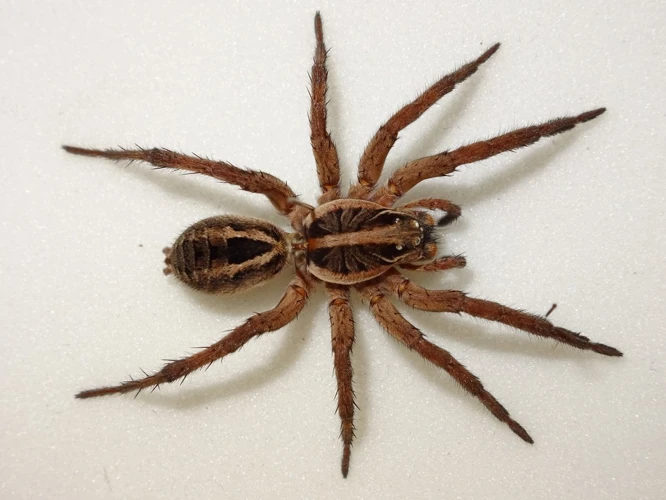
As one of the most common spiders found worldwide, wolf spiders have attracted the attention of many biologists due to their interesting characteristics. These arachnids are known for their large sizes and fast speeds, as well as their unique hunting techniques. Interestingly, wolf spiders face some particularly fierce predators in their natural habitats, including snakes and lizards. While they are capable of defending themselves against these predators, wolf spiders have to constantly adapt to ensure their survival. Let’s take a closer look at the physical and behavioral characteristics of these spiders, as well as their predators and defenses. For more information on wolf spider’s defenses, check out this article.
Physical Characteristics of Wolf Spiders
When it comes to the physical characteristics of wolf spiders, there are a few key features that set them apart from other spider species.
Size and Appearance–
Wolf spiders, on average, measure about 1 inch in length, although some species can be smaller or larger. They are typically hairy and have a stout body shape, which allows them to move quickly and agilely on the ground. Their coloring can vary across species, but most wolf spiders have brown, gray, or black markings that help them blend into their environment.
Eyesight–
Wolf spiders have eight eyes, arranged in three rows. Their excellent vision, coupled with their quick reflexes, make them incredibly effective hunters. This is particularly important given that they are a common target of larger predators such as snakes and lizards, and need to be able to react quickly in order to avoid becoming prey.
Legs and Movement–
Wolf spiders have eight legs which are covered in small, stiff hairs that aid them in movement. These hairs help them to grip onto surfaces and improve their mobility.
Fangs and Venom–
Like all spiders, wolf spiders have two fangs which they use to capture and immobilize their prey. They also have venom glands that produce a mild venom which is used to subdue their prey. While wolf spider venom is not dangerous to humans, it can cause localized pain and swelling.
The physical characteristics of wolf spiders enable them to be expert hunters, both in terms of their agility and vision. To learn more about the predators of wolf spiders, check out our article on birds as predators of wolf spiders and parasitoid wasps as predators of wolf spiders. Additionally, check out an article on how wolf spiders use camouflage to protect themselves from predators and their hunting strategies for more details.
Behavioral Characteristics of Wolf Spiders
Wolf spiders are known for their unique behavioral characteristics that distinguish them from other spider species. Here are some fascinating facts about their behavior:
- Active Hunters: Unlike other spiders that spin webs to capture prey, wolf spiders are active hunters. They stalk and chase their prey, relying on their speed and excellent vision to capture insects and other spiders. This makes them incredibly swift and agile.
- Prowlers of the Night: Wolf spiders are primarily nocturnal. They prefer to hunt at night when temperatures are cooler, and it’s easier for them to move around without becoming dehydrated. Their nocturnal habits also help reduce predation risk from diurnal predators, such as birds.
- Low-Light Vision: Being active at night, wolf spiders have developed unique adaptations to see in low-light conditions. Their eyes are large and prominent, providing them with excellent visual acuity, even in the dark. They have eight eyes arranged in three rows, with the top row consisting of four small eyes that help them detect movement and detail.
- Burrowing: Wolf spiders prefer to live in underground burrows, which they construct themselves or take over from other insects or small animals. These burrows provide them with protection from extreme heat and cold, as well as from predators like birds and snakes that could harm them.
- Motherly Love: Unlike most spider species, wolf spiders display significant maternal behavior. Female wolf spiders carry their egg sacs on their spinnerets and even carry the spiderlings on their backs long after they hatch. This maternal behavior protects the spiderlings from predators and provides them with a food source until they are old enough to hunt on their own.
Understanding the behavioral characteristics of wolf spiders is crucial in understanding their role in the ecosystem as both predators and prey. If you want to learn more about their predation risk assessment, check out our article “Predation Risk Assessment of Wolf Spiders.”
What are the Common Predators of Wolf Spiders?
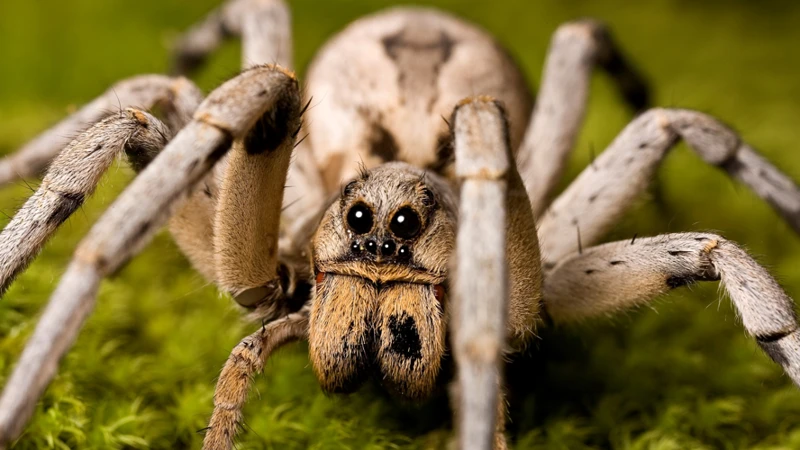
As with most species, wolf spiders have their fair share of predators in the wild. These predators can range from larger mammals to birds and reptiles. Understanding the common predators of wolf spiders is essential in comprehending their ecosystem and role. Let’s explore the predators that pose a threat to these venomous arachnids.
Snakes: the Common Predator of Wolf Spiders
One of the most common predators of wolf spiders are snakes, which pose a great threat to these creatures. Snakes are known for their stealth and agility, which make them highly effective hunters. They have a keen sense of smell, which allows them to detect their prey from quite a distance away. This means that wolf spiders do not have much of a chance of escaping a hunting snake.
Snakes that Prey on Wolf Spiders:
- The Eastern Coral Snake – a venomous species of snake found in the southeastern United States.
- The Common Garter Snake – a non-venomous species found throughout much of North America.
- The Northern Water Snake – a non-venomous species that is commonly found in many parts of North America.
Unfortunately for the wolf spiders, snakes view them as a tasty snack, and will not hesitate to hunt and consume them when given the opportunity. In fact, research has shown that in areas where wolf spiders and snakes coexist, wolf spider populations are typically lower, as they become easy prey for snakes.
The Hunt for Wolf Spiders:
Snakes actively search for their prey, using their keen sense of smell to track down their target. Once they catch the scent of a wolf spider, they will begin to track it down, moving stealthily and quietly towards their quarry.
As soon as the snake spots the wolf spider, it will either lunge at it or use its lightning-fast strike to capture it. If the snake is venomous, it will inject its venom into the spider to immobilize it, making it easier to consume. If the snake is non-venomous, it will use constriction to overpower the spider.
The relationship between snakes and wolf spiders is one of predator and prey, with the snake playing the role of hunter and the wolf spider the hunted. Although the wolf spider has some defense mechanisms to protect itself, these are often not enough to keep it safe from the formidable snake.
Lizards: the Common Predator of Wolf Spiders
Many species of lizards also prey on wolf spiders, making them another common predator of these arachnids. Lizards are known for their quick movements and excellent vision, which give them an advantage in catching their prey.
The following are some common lizard species that often hunt wolf spiders:
- Green Anoles: These lizards are commonly found in North American forests and are known to prey on wolf spiders. Their long tongues and sharp teeth help them catch and eat these spiders with ease.
- Geckos: Geckos are another common predator of wolf spiders, and their sticky toe pads allow them to climb trees and other surfaces to catch their prey.
- Monitor Lizards: These large lizards are found in many parts of the world and are known for their aggressive nature. They are also voracious predators and will often feed on wolf spiders if given the opportunity.
While lizards do pose a threat to wolf spiders, they also have their own predators to worry about. Birds of prey, snakes, and even other lizards may hunt and eat these reptiles, creating a complex web of predator-prey relationships in the ecosystem.
The Relationship between Wolf Spiders and Snakes
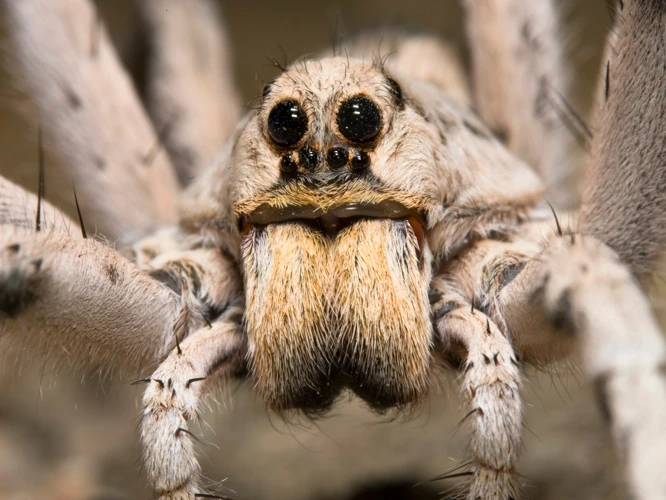
It’s a curious fact that two completely different species, wolf spiders and snakes, share the same habitat. This raises the question: what kind of relationship do they have? Do they fight for resources or coexist peacefully? In this section, we’ll delve into the fascinating relationship between wolf spiders and snakes. From their coexistence in the same habitat to wolf spiders being prey for snakes, we’ll explore the nuances of this complex relationship.
Co-existence in the same Habitat
In the wild, wolf spiders and their common predators, snakes and lizards, often co-exist in the same habitat. This co-existence is facilitated by the fact that each species occupies a different ecological niche in the ecosystem, which minimizes direct competition for resources.
Wolf spiders are primarily ground-dwelling spiders, and they can be found in a wide range of habitats, from forests to deserts. Snakes and lizards, on the other hand, are primarily terrestrial reptiles that are also found in a variety of habitats.
Despite sharing the same habitat, wolf spiders and their predators don’t interact much, and this is due to their differing active periods. Wolf spiders are mainly active during the night, while snakes and some lizard species are active during the day. This means that their paths rarely cross, and even when they do, they tend to keep a safe distance from each other.
Another reason for the co-existence of these species is their different diets. Wolf spiders feed mainly on insects and other spiders, while snakes and lizards prefer larger prey items such as rodents and birds. They do not compete for the same food resources in the ecosystem.
The co-existence of wolf spiders, snakes, and lizards in the same habitat highlights the complexity of ecological relationships in the natural world. While it may seem surprising that these different species can exist together without direct competition, the reality is that the natural world is full of intricate relationships that allow different species to co-exist and thrive.
Wolf Spiders as Prey for Snakes
When it comes to the relationship between wolf spiders and their common predators, the role of snakes cannot be overlooked. Snakes are among the most common predators of wolf spiders, feeding on them as a primary source of food. Let’s take a closer look at the specifics of wolf spiders as prey for snakes.
Firstly, it is important to note that wolf spiders have an array of defense mechanisms to protect themselves from predators. These include camouflaging themselves to blend in with their surroundings and using their swift running abilities to escape danger. However, despite these defenses, they still fall victim to snakes.
Snakes are able to detect wolf spiders through their keen sense of smell and can easily overpower them due to their size and strength. Once captured, they use their venomous bite to incapacitate their prey before consuming them whole. Interestingly, some species of snakes are immune to the venom of wolf spiders and are known to exclusively feed on them, such as the Australian brown snake.
To better understand the impact of snakes on wolf spider populations, table 1 below provides information on the number of wolf spider species known to be preyed on by various species of snakes.
| Snake Species | Number of Wolf Spider Species Preyed on |
|---|---|
| Brown snake | 12 |
| Rattlesnake | 7 |
| Rat snake | 4 |
| Garter snake | 2 |
From the table, it is evident that the brown snake preys on the largest number of wolf spider species, followed by the rattlesnake, rat snake, and garter snake. This underscores the importance of snakes in controlling wolf spider populations in their habitats.
While wolf spiders have their own defense mechanisms, they still fall prey to snakes, which are among their most common predators. Snakes, in turn, play an important role in regulating wolf spider populations.
The Relationship between Wolf Spiders and Lizards
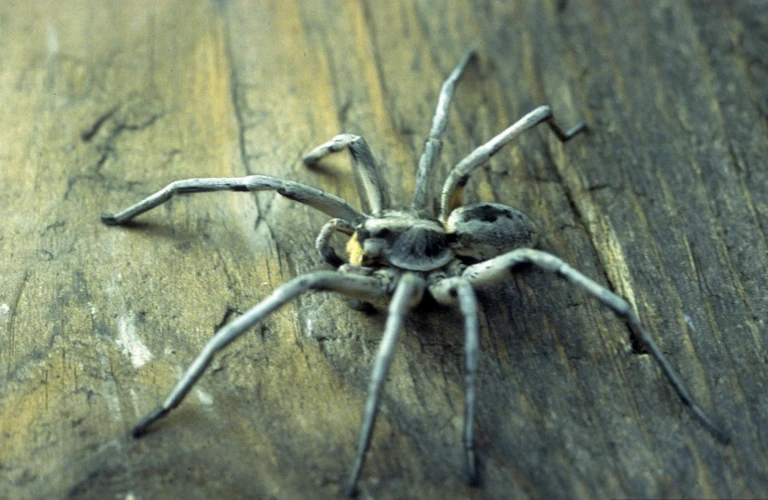
As we delve deeper into the world of wolf spiders and their predators, it’s important to explore the intricate relationships they have with each other. While snakes are a common predator of wolf spiders, lizards are also a major threat to their survival. In this section, we’ll take a closer look at the relationship between wolf spiders and lizards, examining the ways in which they coexist in the same habitat and the tactics wolf spiders use to defend themselves against their cold-blooded predators. Let’s explore the dynamic between these natural enemies with a keen eye for detail.
Co-existence in the same Habitat
Wolf spiders and their common predators, snakes and lizards, often co-exist in the same habitat. This means that they share the same environment and compete for resources such as shelter and food. However, wolf spiders have developed certain strategies to coexist with their predators.
Adaptations of Wolf Spiders:
- Wolf spiders are able to camouflage themselves in their environment, making it difficult for predators to spot them.
- They also have the ability to jump quickly and move swiftly to escape predators.
- Wolf spiders are nocturnal, which means they are active at night and can avoid predators that hunt during the day.
Adaptations of Snakes:
- Snakes have the ability to sense vibrations in the ground, which helps them detect prey or potential threats.
- They are also able to smell with their tongue, which helps them locate prey or predators.
- Some snakes have adapted to live in areas with high populations of wolf spiders and have developed specific hunting behaviors to capture them.
Adaptations of Lizards:
- Lizards are fast runners and are able to quickly catch prey, including wolf spiders.
- Some lizards have developed the ability to detach their tails as a form of self-defense, which can distract predators and allow them to escape.
- Lizards also have excellent vision and can easily detect and locate prey or predators.
Co-existence in the same habitat is a common occurrence for wolf spiders and their common predators. Despite being preyed upon, wolf spiders have developed certain adaptations to survive and coexist with snakes and lizards. Understanding these interactions is important for understanding the larger ecosystem.
Wolf Spiders as Prey for Lizards
Lizards are another common predator of wolf spiders. Despite their relatively small size, wolf spiders are agile predators that are known for their speed and agility. However, lizards, particularly iguanas, are also swift and frequently prey on wolf spiders.
Here are some reasons why wolf spiders are prey to lizards:
- Wolf spiders are nocturnal and often hunt when lizards are also active.
- Wolf spiders are slow movers compared to lizards, which means they can be easily caught.
- Some species of wolf spiders are small and can easily be overpowered by lizards.
Despite being a prey to lizards, wolf spiders can take certain measures to avoid being caught or eaten. For instance, their camouflaged color helps them to blend in with their environment and avoid detection. Additionally, wolf spiders are capable of producing venom, which they can use to defend themselves against predators.
However, here are some reasons why wolf spiders are vulnerable to predation by lizards:
- While wolf spiders can use their venomous bite to defend themselves, this is not always effective against lizards with tough skin or scales.
- Wolf spiders typically freeze and become motionless when they sense a nearby predator, which makes them an easy target for lizards and other predators.
Despite being prey to lizards, wolf spiders play an important role in the ecosystem as both predator and prey. They control insect populations and serve as an important food source for numerous reptiles and birds.
How do Wolf Spiders Defend Themselves from Predators?
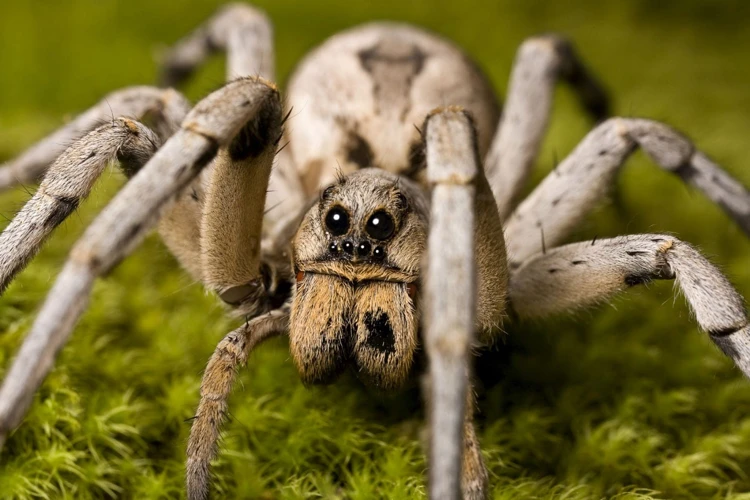
Defense Mechanisms of Wolf Spiders against Predators
Being prey animals, wolf spiders have evolved to possess various mechanisms for defending themselves against their predators. Here are some of the defense mechanisms wolf spiders use to survive in the wild.
Camouflage
Some species of wolf spiders have developed the ability to blend with their surroundings, which makes them harder to spot by predators. They have unique patterns on their bodies that allow them to seamlessly blend into their environment, making it harder for predators to detect them.
Dangerous Fangs and Venom
Wolf spiders are also known for their large, sharp fangs, which they use to hunt and defend themselves against predators. Their venom is also toxic and can paralyze their prey or cause pain and discomfort to predators. However, wolf spiders are not aggressive and will only bite if provoked or cornered.
Rapid Movement and Agility
Another defense mechanism that wolf spiders use to avoid predators is their rapid movement and agility. They have the ability to move quickly and unpredictably, making it harder for predators to catch them. Additionally, wolf spiders have excellent eyesight, which gives them an advantage when trying to escape from predators.
Posturing and Threat Displays
When cornered or threatened, wolf spiders can display aggressive postures, which can deter predators. They may stand on their hind legs and raise their front legs in a threatening posture, or they may hiss and make clicking sounds to warn predators.
Conclusion
Wolf spiders have adapted various defense mechanisms to protect themselves from predators and survive in the wild. Their unique camouflage, dangerous fangs and venom, rapid movement and agility, as well as their posturing and threat displays, all play a crucial role in their survival. Although they may not be the top of the food chain, their adaptations and importance in the ecosystem should not be underestimated.
The Importance of Wolf Spiders
As much as some people may fear wolf spiders, these creatures actually play an important role in the ecosystem. They are beneficial to humans in many ways and their presence in nature contributes to a healthy balance in the environment. Let’s take a closer look at why wolf spiders are so important.
Role in the Ecosystem
Wolf spiders play a vital role in the ecosystem, as they help maintain the balance of the food chain. They are natural predators themselves, feeding on a variety of insects, including mosquitoes, flies, and grasshoppers, which helps significantly in controlling their populations. Their prey base also includes other small spiders, which helps regulate their numbers as well.
Wolf spiders are also an important food source for many larger animals like birds, reptiles, and mammals. They help sustain these species and maintain biodiversity in the ecosystem. In fact, the decline of wolf spiders in some areas has been associated with the decrease in the population of some of these larger animals.
Wolf spiders also play an important role in nutrient cycling. They help decompose organic matter, breaking it down into smaller particles that can be easily consumed by other organisms, including plants. This, in turn, improves the fertility of the soil and promotes plant growth, leading to better vegetation cover and a healthier ecosystem.
The presence of wolf spiders in an ecosystem is crucial for its stability and functioning, and their conservation is of utmost importance for the well-being of the entire biological community.
Here are some key points summarizing the role of wolf spiders in the ecosystem:
- They help control the populations of their prey base, which includes many harmful insects.
- They serve as a vital food source for larger animals, maintaining biodiversity.
- They aid in nutrient cycling, promoting plant growth and improving soil fertility.
Benefit to Humans
Wolf spiders are beneficial to humans in a number of ways. Here are some ways in which these spiders can provide benefits to humans:
- Pest Control: Wolf spiders feed on a variety of insects and other small creatures, including cockroaches, crickets, and mosquitoes, which are considered pests by humans. By preying on these pests, wolf spiders can help keep their populations under control, reducing the need for pesticides and other harmful chemicals in households and gardens. This is a natural and environmentally friendly way of dealing with pests.
- Medical Benefits: Wolf spiders also have some medical benefits. One species of wolf spider, Lycosa tarantula, was used in traditional medicine to combat the effects of tarantula bites. While this treatment may not be widely used today, it shows that wolf spiders were once recognized for their medicinal properties.
- Educational Value: For those interested in entomology, wolf spiders can be a fascinating and educational subject to study. Learning about their physical and behavioral characteristics, as well as their natural predators and prey, can help people gain a better understanding of the world around them and appreciate the biodiversity of our planet.
While wolf spiders may not be the most beloved creatures by humans, it’s important to recognize the benefits they provide to our ecosystems and our lives. From pest control to potential medical benefits and educational value, there are numerous reasons to appreciate these eight-legged wonders.
Conclusion
In conclusion, wolf spiders are fascinating creatures that play an important role in the ecosystem. Despite being feared by some humans and being the prey of several predators, they have several unique physical and behavioral characteristics that help them survive in their habitat.
Their common predators, such as snakes and lizards, are also crucial members of the ecosystem. Their co-existence with wolf spiders may seem like a competition, but it actually creates a balance that benefits the entire ecosystem.
While wolf spiders may seem like a threat to humans, they are actually beneficial. They help control insect populations and serve as food for other animals, including birds and small mammals. In some cultures, they are even considered to be a good omen.
It is important to remember that all creatures, big or small, have a place in the ecosystem and play a crucial role in maintaining balance. By understanding the relationships between wolf spiders and their predators, we can appreciate the complexity and beauty of nature.
In conclusion, let us appreciate and respect the creatures that inhabit our world, including the remarkable wolf spider.
Frequently Asked Questions
1. How venomous are Wolf Spiders?
Wolf Spiders are venomous but they seldom bite humans. Their venom is not lethal to humans and their bites are usually no worse than a bee sting.
2. Can Wolf Spiders jump?
Yes, Wolf Spiders can jump but they do not use it as their primary mode of movement. They mostly walk or run to catch their prey.
3. Are Snakes and Lizards the only predators of Wolf Spiders?
No, apart from Snakes and Lizards, some other predators of Wolf spiders include birds, wasps, and other spiders.
4. Do Wolf Spiders make webs?
No, Wolf Spiders do not make webs to catch their prey. They actively hunt for their food.
5. Are Wolf Spiders nocturnal?
Yes, most Wolf Spiders are nocturnal and hunt during the night. However, some species are active during the day.
6. Are Wolf Spiders dangerous to humans?
Wolf Spiders are not dangerous to humans. Their venom is not lethal and they usually avoid humans unless threatened.
7. Can Wolf Spiders change color?
No, Wolf Spiders cannot change their color. They are usually brown, gray, black or tan with distinct markings on their body.
8. Do Wolf Spiders have any benefits to humans?
Yes, Wolf Spiders are beneficial to humans as they help in controlling the population of insects in our surroundings.
9. How many eyes do Wolf Spiders have?
Wolf Spiders have eight eyes arranged in three rows. They have excellent vision and are able to see in low light.
10. How big can a Wolf Spider get?
The size of Wolf Spiders varies across different species. While some can be as small as 0.3 inches, some can grow as big as 4 inches in length.






